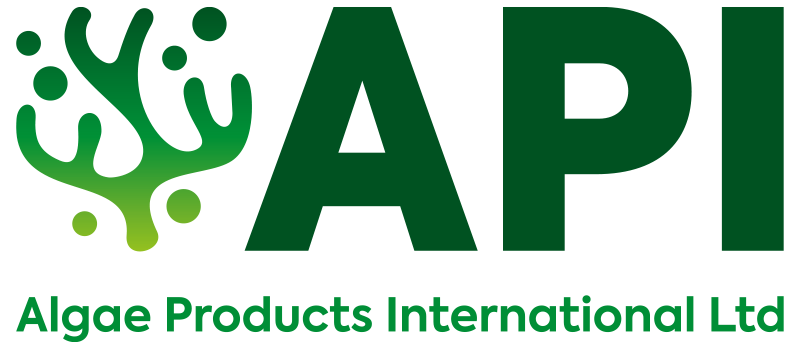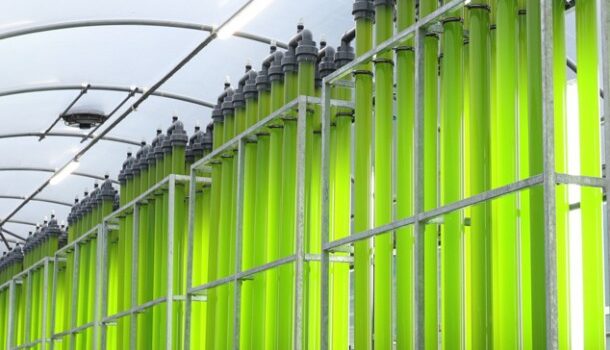Microalgae: The Future of Sustainability
Microalgae — a microscopic unicellular organisms that can grow in different environments, including saltwater, freshwater, and wastewater. They are photosynthetic, meaning they produce energy from sunlight. they are a microscopic powerhouse with the potential to revolutionise various industries, offering sustainable solutions that align with our planet’s urgent need for eco-conscious practices. From bioethanol production to agriculture, sustainable development, food, nutraceuticals, pharmaceutical and aquaculture, microalgae’s versatile applications are rewriting the rules of innovation and sustainability. Join us on a journey through these industries and explore how microalgae, coupled with cutting-edge technology, is driving positive change and supporting a more sustainable planet.
Relevance in Different Industries

Due to their fast growth and high productivity, microalgae have gained significant attention in different industries. They can be used as a source of nutrition, pharmaceuticals, cosmetics, and biofuels.
Cosmetics: Nature’s Elixir for Beauty
Microalgae’s natural potency makes it a sought-after ingredient in the cosmetics world. Bursting with antioxidants, vitamins, and nourishing compounds, these microorganisms are unlocking a new era of skincare and beauty products. Their innate ability to thrive in extreme environments has translated into resilient and effective cosmetic ingredients. From revitalising serums to age-defying creams, microalgae extracts are changing the game, promoting youthful radiance while making strides in sustainable beauty.
Food: Nourishing the World with Green Nutrients
As the global demand for nutritious, sustainable food rises, microalgae have emerged as a beacon of hope. Packed with proteins, essential fatty acids, and vitamins, microalgae are redefining the way we feed the world. Their cultivation requires significantly less land and water compared to traditional crops, making them an eco-friendly alternative. From protein-rich powders to omega-3-loaded supplements, microalgae are becoming key players in the quest for a nourished planet.
Aquafeed: Filling the Ocean’s Pantry Responsibly
The health of our oceans is directly tied to the well-being of the planet. Microalgae are revolutionising aquafeed, providing a sustainable solution to meet the escalating demand for seafood. These tiny powerhouses offer a natural source of nutrients that enhance the growth and health of aquatic organisms. By incorporating microalgae into aquafeed, we’re creating a circular food system that promotes both marine health and global sustainability.
Nutraceuticals: Greening the Path to Wellness
Nutraceuticals bridge the gap between food and medicine, offering natural health solutions. Microalgae, with their rich nutritional profiles, are enriching the nutraceutical landscape. Packed with essential nutrients, microalgae-derived supplements are supporting human health, bolstering immunity, and combating chronic diseases. As the demand for sustainable wellness solutions grows, microalgae are stepping up as a green source of vitality.
Pharmaceuticals: Microscopic Marvels for Medical Breakthroughs
The pharmaceutical industry is no stranger to microalgae’s potential. These remarkable organisms harbor bioactive compounds that hold promise in drug discovery and development. From anticancer agents to antiviral compounds, microalgae are contributing to life-saving breakthroughs. Their rapid growth rates and adaptability make them valuable resources for producing biopharmaceuticals efficiently and sustainably.
Microalgae Cultivation Technology
The technology involved in microalgae cultivation varies depending on the type of microalgae and the environment. However, there are several common cultivation systems used in industry.
Open Ponds
Open ponds are the most common method of cultivation. They use sunlight and carbon dioxide as inputs and generate microalgae biomass as an output.
Photobioreactors
Photobioreactors use both natural & artificial light and a closed system to achieve optimal microalgae growth conditions. They are more efficient and scalable than open ponds.
Hybrid Systems
Hybrid systems combine open ponds and photobioreactors to benefit from both systems’ advantages and overcome their disadvantages.
Sustainability and Environmental Impact

Cartoon people gardening and huge hands protecting world. Person watering plants, save planet, green or eco lifestyle flat vector illustration. Environment, ecology, Earth day, care, nature concept
Microalgae offer potential for environmental sustainability due to their numerous benefits.
Reducing Greenhouse Gas Emissions
Microalgae have a remarkable ability to capture and consume carbon dioxide (CO2) during their growth through the process of photosynthesis. Photosynthesis involves the conversion of carbon dioxide and sunlight into oxygen and organic compounds, primarily in the form of sugars. By utilizing CO2 as a source of carbon for their growth, microalgae effectively sequester carbon, thereby reducing the amount of this greenhouse gas in the atmosphere.
Waste Reduction and Water Conservation
Microalgae play a significant role in wastewater treatment and nutrient recycling. They have the ability to consume organic waste and nutrients from polluted water sources. This ability is harnessed in processes like algae-based wastewater treatment, also known as algae biofuel production. Here’s how it works:
- Wastewater Treatment: Microalgae can remove pollutants like nitrogen and phosphorus from wastewater by incorporating these nutrients into their biomass. This helps to purify the water and prevent the excessive growth of harmful algae in natural water bodies caused by nutrient runoff.
- Nutrient Recycling: The harvested microalgae biomass can be further processed to extract nutrients and other valuable compounds. This biomass can then be used as a natural and nutrient-rich fertilizer, thereby closing the nutrient loop and reducing the reliance on synthetic fertilizers that often contribute to water pollution.
- Water Conservation: Since microalgae-based wastewater treatment is effective at removing pollutants, the treated water can be safely reused for various purposes, including irrigation and industrial processes. This contributes to water conservation and reduces the strain on freshwater resources.
Challenges and Solutions
The microalgae industry has several challenges to overcome, including low productivity, contamination, and high production costs. However, research and innovation have developed solutions to overcome these challenges.
Genetic Engineering
Genetic engineering can enhance microalgae’s properties and increase productivity, such as optimising photosynthesis efficiency.
Closed Systems
Closed systems are less prone to contamination and allow better control of microalgae growth conditions, but they can be costlier.
Bio-refinery Approach
The biorefinery approach helps maximise the value of microalgae biomass by extracting different products, such as biofuels, bioplastics, and food supplements.
Conclusion
Microalgae is a promising source of sustainable products from different industries. With technology and innovation, microalgae can revolutionise the way we think about energy, nutrition, and health.


